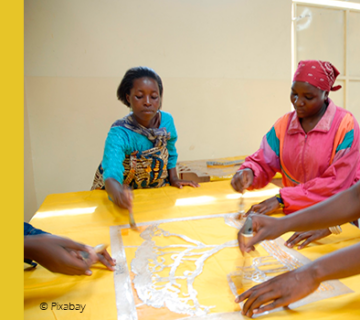An example of integral ecology: young people and communities united for the protection of mangroves
 “A habitat which has been destroyed, burned, attacked by waste and pesticides. This is what the mangroves here are becoming. We want to help our land and our people.” These are the words of Sirangelo Rodrigues Galiano, a 49-year-old focolarino of Brazilian origin, but now by adoption, Ecuadorian. He lives in the province of Esmeraldas, an Afro-Ecuadorian region in the north of Ecuador, known as the green province. Tropical climate, heavenly beaches, abundant biodiversity. It is above all the existence of the mangroves that create such a unique natural habitat, which is now in danger because of man.
“A habitat which has been destroyed, burned, attacked by waste and pesticides. This is what the mangroves here are becoming. We want to help our land and our people.” These are the words of Sirangelo Rodrigues Galiano, a 49-year-old focolarino of Brazilian origin, but now by adoption, Ecuadorian. He lives in the province of Esmeraldas, an Afro-Ecuadorian region in the north of Ecuador, known as the green province. Tropical climate, heavenly beaches, abundant biodiversity. It is above all the existence of the mangroves that create such a unique natural habitat, which is now in danger because of man.
Mangroves are plant formations consisting of huge roots, periodically covered by the tides. These features allow the creation of a very original habitat, teeming with animals and plants which cannot be found elsewhere and which are now at risk of extinction.
Sirangelo moved to Ecuador from Brazil in 2016 when this area was badly affected by an earthquake. Thanks to AMU (Action for a United World), FEPP (the Populorum Progressio Ecuador Fund) and Fundación Amiga, the Sunrise project was established, of which Sirangelo is responsible. This project brought aid to 3 villages destroyed by the earthquake, Salima, Ten August and Macará, whose inhabitants are still grateful for everything they received.

Sirangelo recounts, “A few years after the earthquake emergency, other disasters are now looming: for example the climate crisis and the situation of young people who are often forced to leave because they are out of work or become victims of the drug trade.” This gave rise to the Sunrise+ programme which involves cleaning, mangrove reforestation and ecological education. “About 400 young people have taken part. We meet regularly to clean and raise awareness in the whole community. The activity started with young people, but now we want to involve everyone. “One of the main partners in this new initiative was the Ministry of the Environment, Water and Ecological Transition in the Muisne region, which is working together with the government and four other NGOs.
It is interesting that it was the young people who suggested how to organize Sunrise+. Through the 6X1 methodology , 6 steps for 1 goal: observe the context and the problems; think of possible solutions; involve; act; evaluate the work; celebrate. All this in the quest for peace.
Sirangelo concludes, “Our goal is to be alongside the population. Today it is mostly young people who ask us for help and we try to be there with and for them. They love their land, but often have to leave it. We want to help them stay and find new opportunities, starting from the preservation of the natural resources. Thanks to them, a change of mentality is being triggered for the preservation of our Planet, our common home.”
Laura Salerno
For more information, see the full article here


 Italiano
Italiano Español
Español Français
Français Português
Português




No comment